Peculiar Past
Forgotten facts and enduring legends share space in history's margins. They travel beyond textbooks and reveal the strangeness that has always lived alongside us throughout the years.

The Dancing Plague Of 1518—Real
What if you suddenly couldn't stop dancing? In July 1518, that nightmare became reality in Strasbourg when hundreds of people danced uncontrollably, some for days without rest. The mysterious affliction claimed lives as exhausted dancers reportedly collapsed and died from strokes or sheer exhaustion.
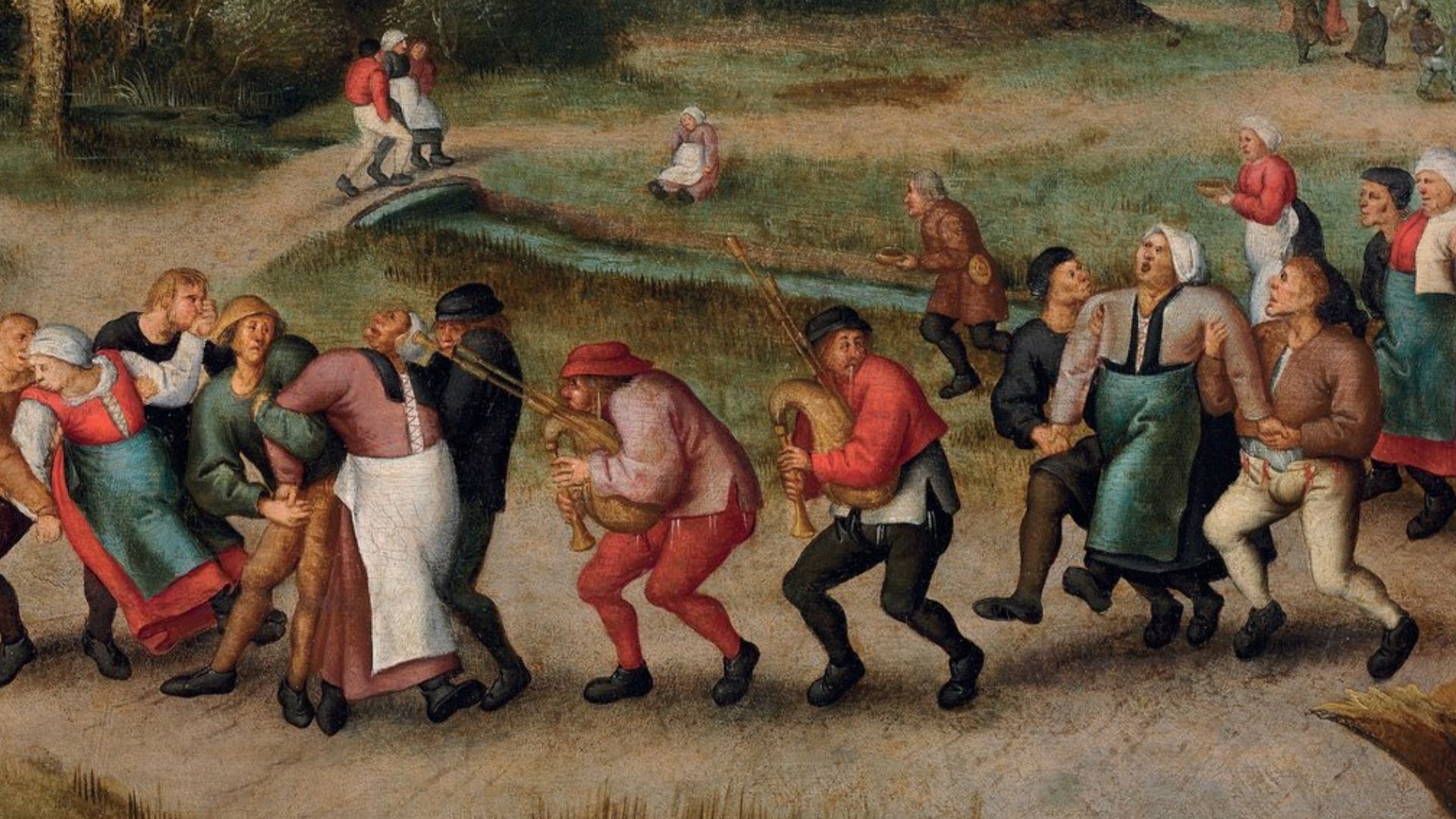 Pieter Brueghel the Younger, Wikimedia Commons
Pieter Brueghel the Younger, Wikimedia Commons
The Dancing Plague Of 1518 (Cont.)
Medical experts remain baffled by this outbreak centuries later. Theories range from mass hysteria to ergot poisoning. Most bizarrely, city authorities tried to "cure" the dancers by hiring musicians and building a wooden stage, believing that dancing more would somehow help them recover.
 Unknown authorUnknown author, Wikimedia Commons
Unknown authorUnknown author, Wikimedia Commons
The Cadaver Synod—Real
The Catholic Church has witnessed many controversial moments throughout its history, but none match this. In 897 CE, Pope Stephen VI dug up his predecessor Pope Formosus, who had been dead for nine months, propped the decomposing body on a throne, and put it on trial.
 Jean-Paul Laurens, Wikimedia Commons
Jean-Paul Laurens, Wikimedia Commons
The Cadaver Synod (Cont.)
During this macabre court proceeding, the rotting corpse was dressed in papal vestments while a deacon answered on its behalf. Found guilty of perjury and other charges, the deceased pope had three fingers cut off, and his remains were thrown into the Tiber River.
 Unspecified, Wikimedia Commons
Unspecified, Wikimedia Commons
Galloping Crocodiles—Likely Real
The Sahara Desert wasn't always the barren wasteland we know today. A hundred million years ago, it was a lush, verdant ecosystem teeming with life, including predators that would seem impossible by modern standards. Galloping crocodiles with long, land-adapted legs roamed the region.
 Sergey Pesterev, Wikimedia Commons
Sergey Pesterev, Wikimedia Commons
Galloping Crocodiles (Cont.)
Unlike their modern descendants, who awkwardly shuffle on their bellies, these prehistoric crocodilians evolved specialized limbs for terrestrial locomotion. Fossil discoveries in 2009 revealed species like Kaprosuchus, nicknamed the "boar croc," with legs positioned directly beneath their bodies like mammals.
 Nobu Tamura (http://spinops.blogspot.com), Wikimedia Commons
Nobu Tamura (http://spinops.blogspot.com), Wikimedia Commons
The Great Molasses Flood—Real
January 15, 1919, brought an unusual disaster to Boston's North End neighborhood. A massive storage tank containing 2.3 million gallons of molasses suddenly burst, unleashing a 25-foot-high wave of sticky brown liquid that surged through streets at 35 miles per hour.
The Great Molasses Flood (Cont.)
Basically, cold temperatures made the molasses thicker and more dangerous, trapping victims who couldn't escape the viscous flow. The cleanup lasted for weeks, with the harbor remaining brown until summer. Litigation against United States Industrial Alcohol Company resulted in one of America's first class-action lawsuits.
 Unknown authorUnknown author, Wikimedia Commons
Unknown authorUnknown author, Wikimedia Commons

History's most fascinating stories and darkest secrets, delivered to your inbox daily.
Ketchup As Medicine—Real
When you pour ketchup on your fries today, you're using what was once considered a pharmaceutical product. In 1834, Ohio physician Dr John Cook began selling tomato ketchup as a remedy for indigestion, billing it as “Dr Miles Compound Extract of Tomato”.
 Engraver William Holl, Wikimedia Commons
Engraver William Holl, Wikimedia Commons
Ketchup As Medicine (Cont.)
Well, ketchup gained popularity as a food accompaniment in the 19th century, with Henry J Heinz revolutionizing the industry in 1876 by creating a preservative-free version. His innovation came when Americans were increasingly concerned about food additives, and Heinz's "pure" ketchup promised safety and flavor.
The Lost Colony Of Roanoke—Real
In 1587, John White led 115 English colonists to establish a settlement on Roanoke Island off North Carolina's coast. When White returned from an extended supply run to England in 1590, he found the colony completely abandoned, with only the word "CROATOAN" carved into a post.
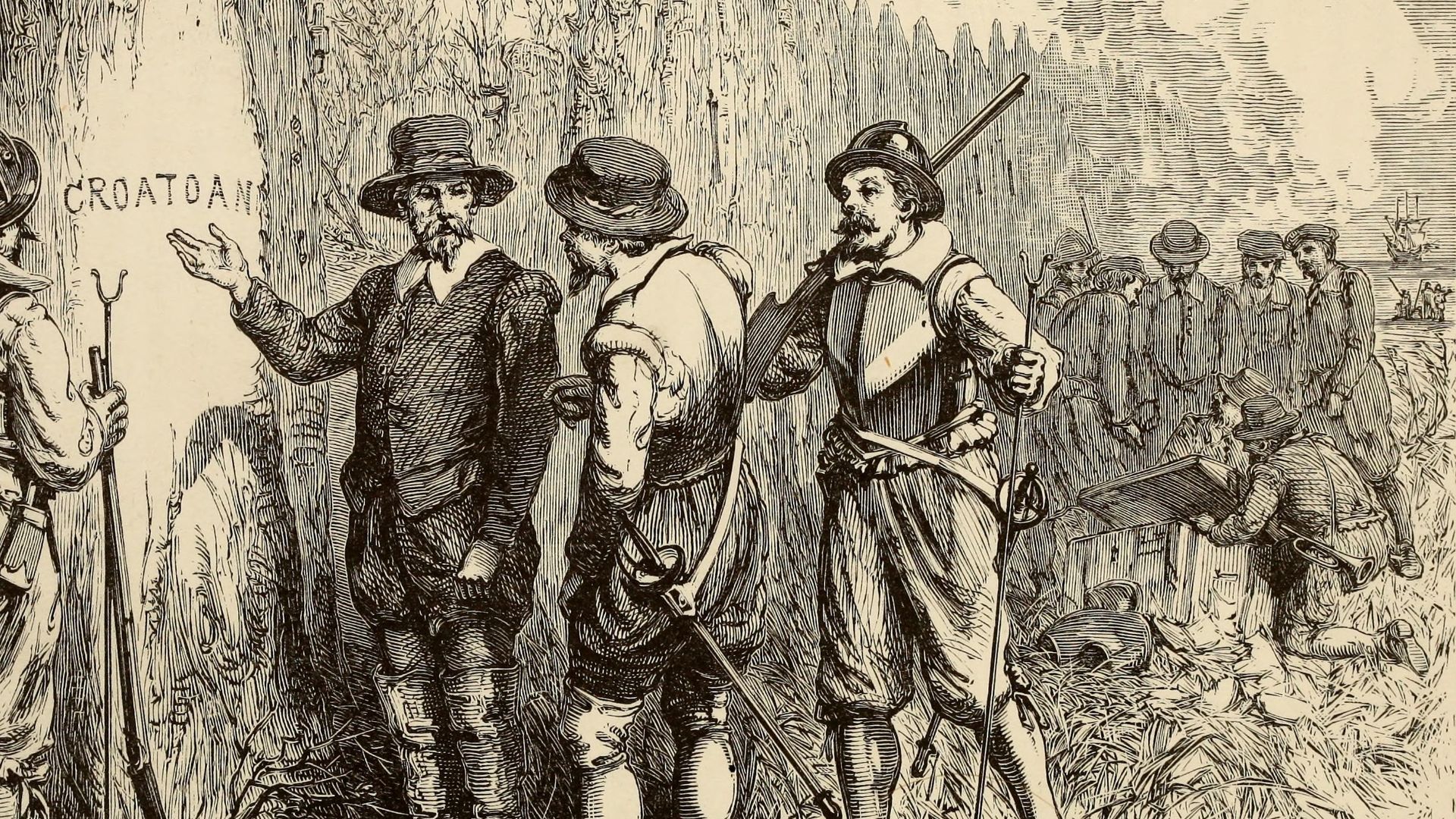 Design by William Ludwell Sheppard, Engraving by William James Linton, Wikimedia Commons
Design by William Ludwell Sheppard, Engraving by William James Linton, Wikimedia Commons
The Lost Colony Of Roanoke (Cont.)
Recent discoveries suggest the colonists may have split into smaller groups and integrated with local Native American tribes. Archaeological evidence shows European artifacts scattered across multiple indigenous sites in the region. DNA analysis of local populations has also revealed potential genetic connections.
 Engraving by John Parker Davis, Wikimedia Commons
Engraving by John Parker Davis, Wikimedia Commons
Tablecloths As Communal Napkins—Likely Real
Your dining table's elegant covering has a rather unappetizing past. Before individual napkins became common in European dining, tablecloths served as massive communal napkins for all diners at the table. After messy medieval feasts, guests would wipe greasy hands and food-covered faces directly on the tablecloth.
Tablecloths As Communal Napkins (Cont.)
The transition to individual napkins began among Italian nobility during the Renaissance, with etiquette books recommending smaller cloths for personal use. By the 17th century, individual napkins had become status symbols among the wealthy. Elaborate napkin folding emerged as an art form, with servants creating intricate designs.
 The original uploader was Paulnasca at English Wikipedia., Wikimedia Commons
The original uploader was Paulnasca at English Wikipedia., Wikimedia Commons
The Flat Earth Misconception—Real
Did medieval people really believe the Earth was flat? Not at all. This persistent historical myth falsely suggests that pre-Columbus Europeans feared sailing off the edge of a flat world. In reality, educated people have understood Earth's spherical nature since ancient Greek times.
 Orlando Ferguson, Wikimedia Commons
Orlando Ferguson, Wikimedia Commons
The Flat Earth Misconception (Cont.)
Eratosthenes calculated its circumference with remarkable accuracy around 240 BCE. The myth originated in the 19th century, with authors like Washington Irving embellishing the story of Columbus facing opposition from flat-Earth-believing scholars. This fabrication served a narrative of modern scientific progress triumphing over medieval superstition.
 Unknown authorUnknown author, Wikimedia Commons
Unknown authorUnknown author, Wikimedia Commons
The Philadelphia Experiment—Legend
According to legend, in October 1943, the US Navy conducted a secret experiment at the Philadelphia Naval Shipyard to render the destroyer USS Eldridge invisible to enemy radar. The experiment went catastrophically wrong, making the ship physically vanish and teleport to Norfolk, before reappearing in Philadelphia.
The Philadelphia Experiment (Cont.)
This story first emerged in the 1950s through letters sent by Carlos Miguel Allende to UFO researcher Morris K Jessup. Sailors allegedly suffered horrific side effects. Some fused into the ship's metal structure, others disappeared entirely, and survivors reportedly experienced mental illness.
Vikings And Horned Helmets—Likely Real
The iconic image of Vikings sporting horned helmets while raiding coastal villages is pure fiction. This widespread misconception started in the 19th century, primarily through costume designs for Wagner's opera Der Ring des Nibelungen, where Norse gods and heroes wore horned headgear.
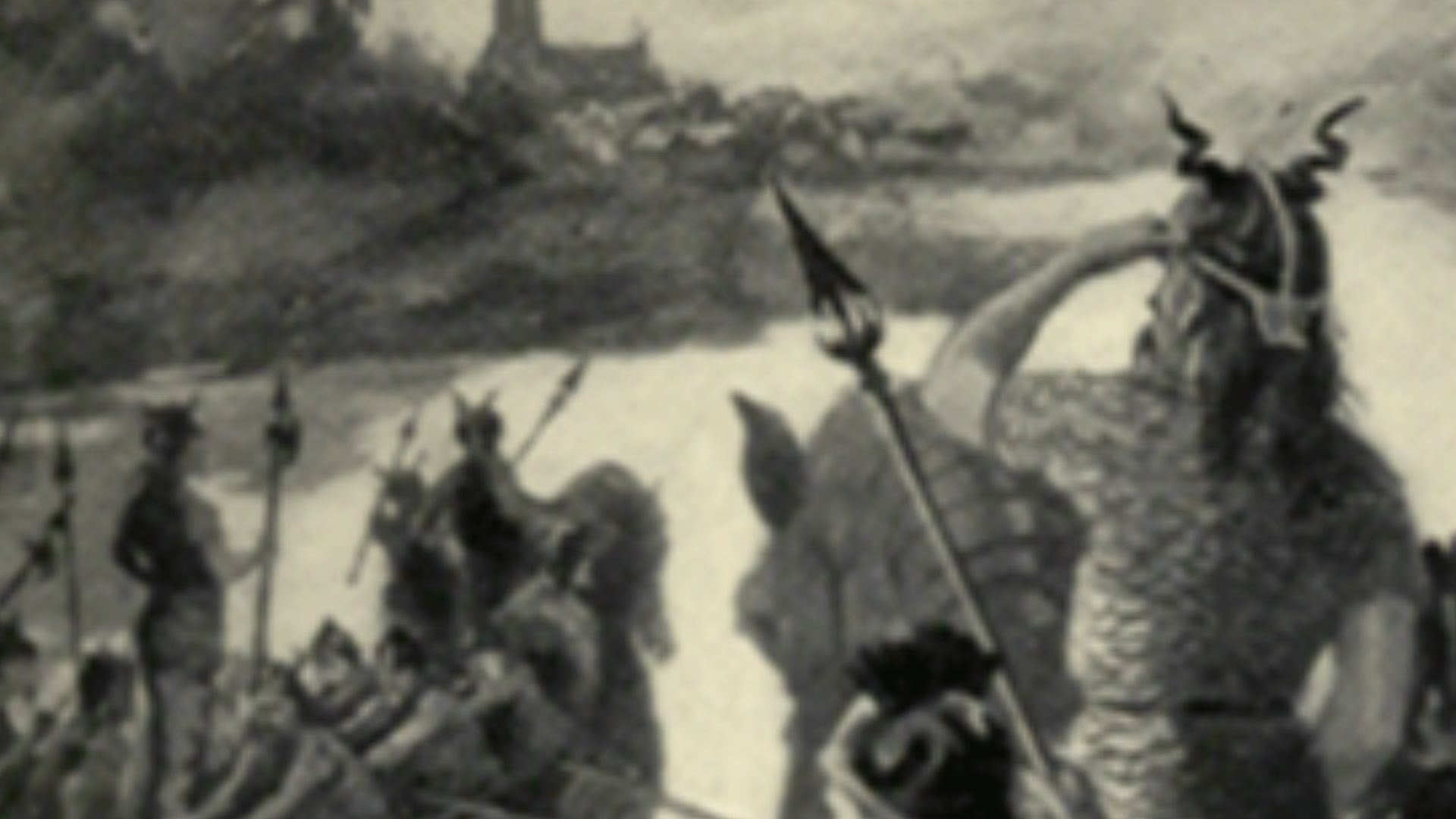 J.W. Kennedy, Wikimedia Commons
J.W. Kennedy, Wikimedia Commons
Vikings And Horned Helmets (Cont.)
Victorian artists further cemented this false visual. However, archaeological evidence tells a different story. Actual Viking helmets were practical, conical or rounded designs made from single iron pieces, sometimes with nose guards and chain mail for neck protection. Horns would have been a battlefield liability.
The Baboon Railway Worker—Likely Real
In the late 1800s, a baboon named Jack became an official employee of the South African Railway. This primate didn't just perform simple tasks. He literally operated the signals at Uitenhage station near Port Elizabeth, working alongside his disabled human companion, signalman James Wide.
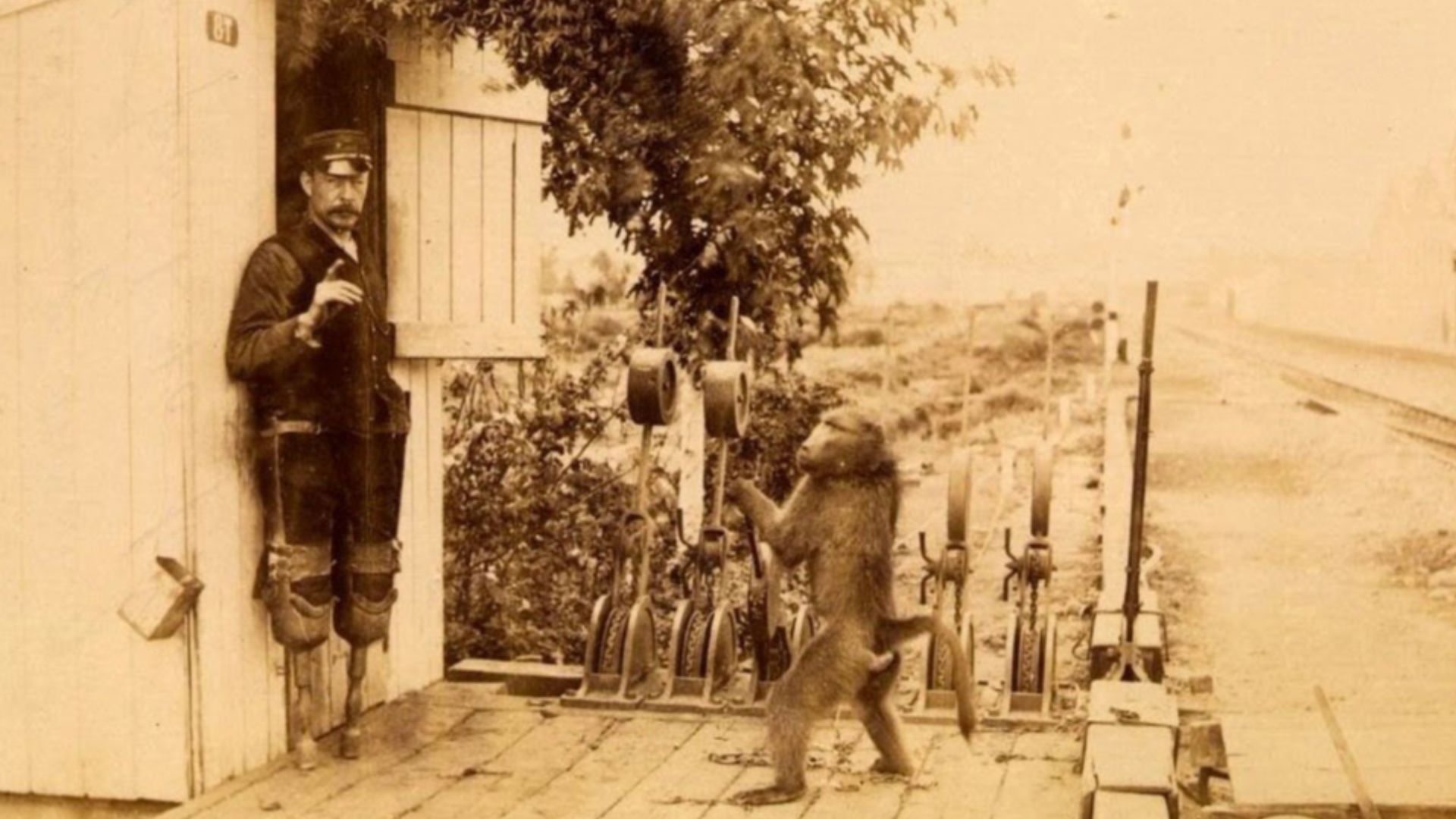 Unknown authorUnknown author, Wikimedia Commons
Unknown authorUnknown author, Wikimedia Commons
The Baboon Railway Worker (Cont.)
Jack learned to respond to train whistles and never made a mistake during his nine-year career. Railway officials initially dismissed reports of a baboon operating critical railway signals as absurd rumors. When they conducted a surprise inspection, they were astonished to find Jack performing his duties perfectly.
 Unknown authorUnknown author, Wikimedia Commons
Unknown authorUnknown author, Wikimedia Commons
The Trojan Horse—Legend
A giant wooden horse concealing Greek warriors breaches Troy's impenetrable walls. It is one of history's most famous military deceptions, immortalized in Homer's epic poems. The legend describes how, after a long siege, Greek forces pretended to sail away, leaving behind a wooden horse as a “gift”.
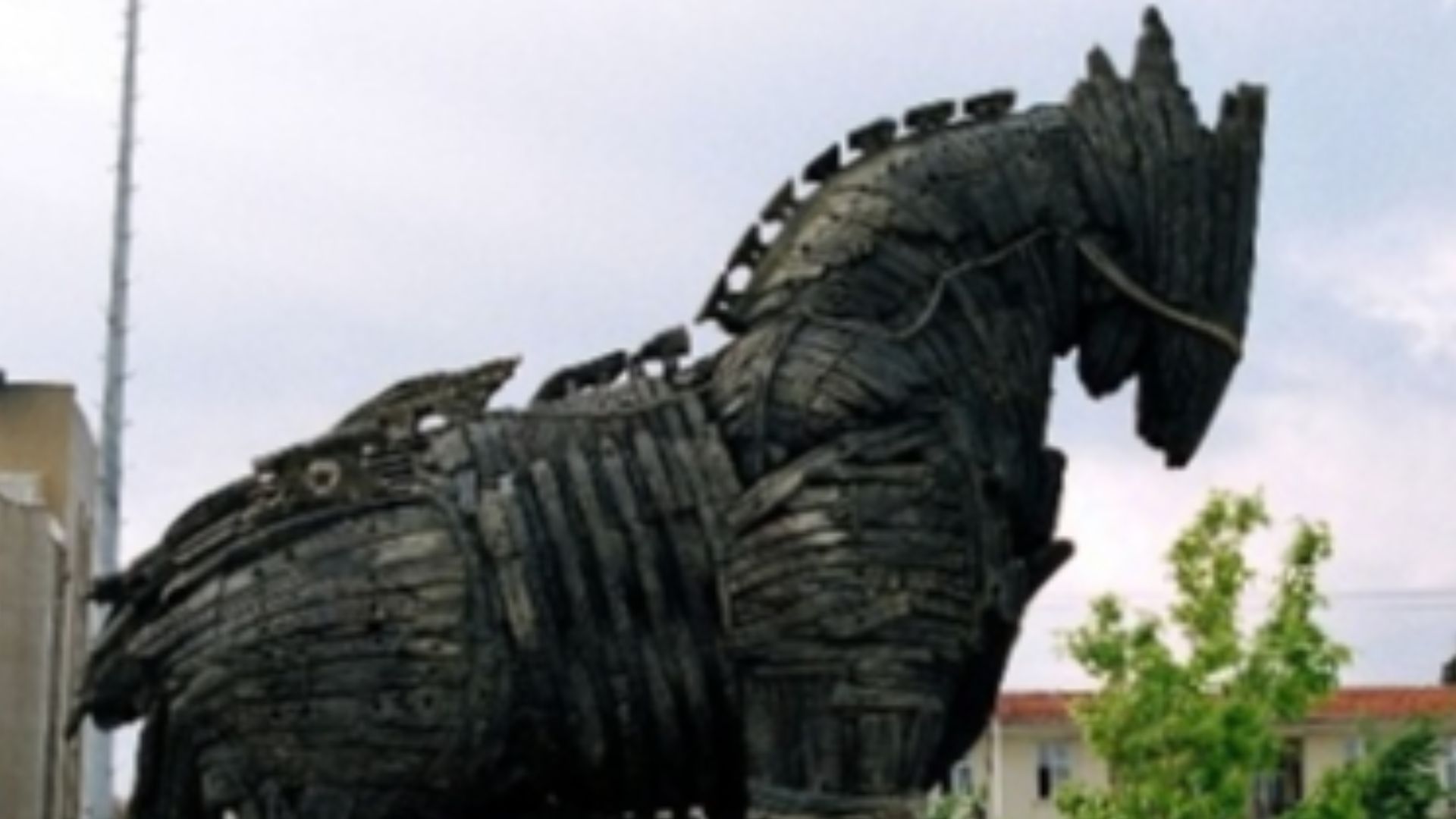 Fredrik Posse, Wikimedia Commons
Fredrik Posse, Wikimedia Commons
The Trojan Horse (Cont.)
Triumphant Trojans dragged it inside their city walls, unaware that elite Greek soldiers hid within, waiting to open the gates for their returning army under the cover of darkness. While this tale has taken aback centuries of listeners and readers, archaeological evidence remains inconclusive.
 Jorge Láscar from Australia, Wikimedia Commons
Jorge Láscar from Australia, Wikimedia Commons
The Medal-Winning Dog—Likely Real
During the London Blitz of WWII, a Great Dane named Juliana performed an act of heroism that earned her the Blue Cross Medal, a prestigious British award for animal bravery. The canine extinguished an incendiary explosive that had crashed through her owner's roof by urinating on it.
The Medal-Winning Dog (Cont.)
This wasn't Juliana's only heroic act. Three years later, she alerted her owner to a house fire, saving the family and earning a second Blue Cross Medal. This made her the only animal to receive the honor twice. Juliana possesses quick-thinking "liquid solution" techniques.
 Ian Dunster, Wikimedia Commons
Ian Dunster, Wikimedia Commons
Female Gladiators Of Rome—Real
Hidden beneath the masculine mythology of Roman gladiatorial combat lies a surprising historical reality: women also fought as professional gladiators. Called "gladiatrices," these female fighters participated in the spectacles of the arena, using the same weapons and following similar rules as their male counterparts.
Female Gladiators Of Rome (Cont.)
Archaeological evidence, including a marble relief from Halicarnassus from the 1st or 2nd century CE, clearly portrays female gladiators in combat. Emperor Domitian especially enjoyed staging fights between women and dwarfs by torchlight, while other accounts describe female gladiators battling exotic animals.
 en:User:Xastic, Wikimedia Commons
en:User:Xastic, Wikimedia Commons
The Origin Of The Handshake—Likely Real
Ancient artifacts from Mesopotamia and Greece depict handshakes as formal gestures symbolizing peace, agreement, and mutual respect. The earliest known representation appears on a 9th-century BCE relief showing the Assyrian King Shalmaneser III clasping hands with a Babylonian ruler, sealing their diplomatic alliance.
 Osama Shukir Muhammed Amin FRCP(Glasg), Wikimedia Commons
Osama Shukir Muhammed Amin FRCP(Glasg), Wikimedia Commons
The Origin Of The Handshake (Cont.)
Historians believe handshakes initially evolved as a practical safety measure to demonstrate neither person held a weapon. The up-and-down motion may have originated to dislodge any daggers hidden in sleeves. By medieval times, knights would shake hands to dislodge potential weapons before meeting.
 Unknown authorUnknown author, Wikimedia Commons
Unknown authorUnknown author, Wikimedia Commons
Ancient Time Capsules—Real
Before modern communities sealed memorabilia into cornerstone containers, ancient civilizations preserved messages for future generations. Archaeologists have found foundation deposits dating back thousands of years from Ancient Egypt, Mesopotamia, and China. These are collections of artifacts buried beneath buildings containing Ancient Time Capsules (Cont.)
Ancient Time Capsules (Cont.)
Chinese emperors during the Song dynasty (960–1279 CE) placed elaborate caskets containing silk scrolls, coins, and ceramic figurines within temple foundations. These ancient time capsules served purposes beyond mere historical record-keeping. They often contained ritualistic objects meant to imbue structures with divine protection.
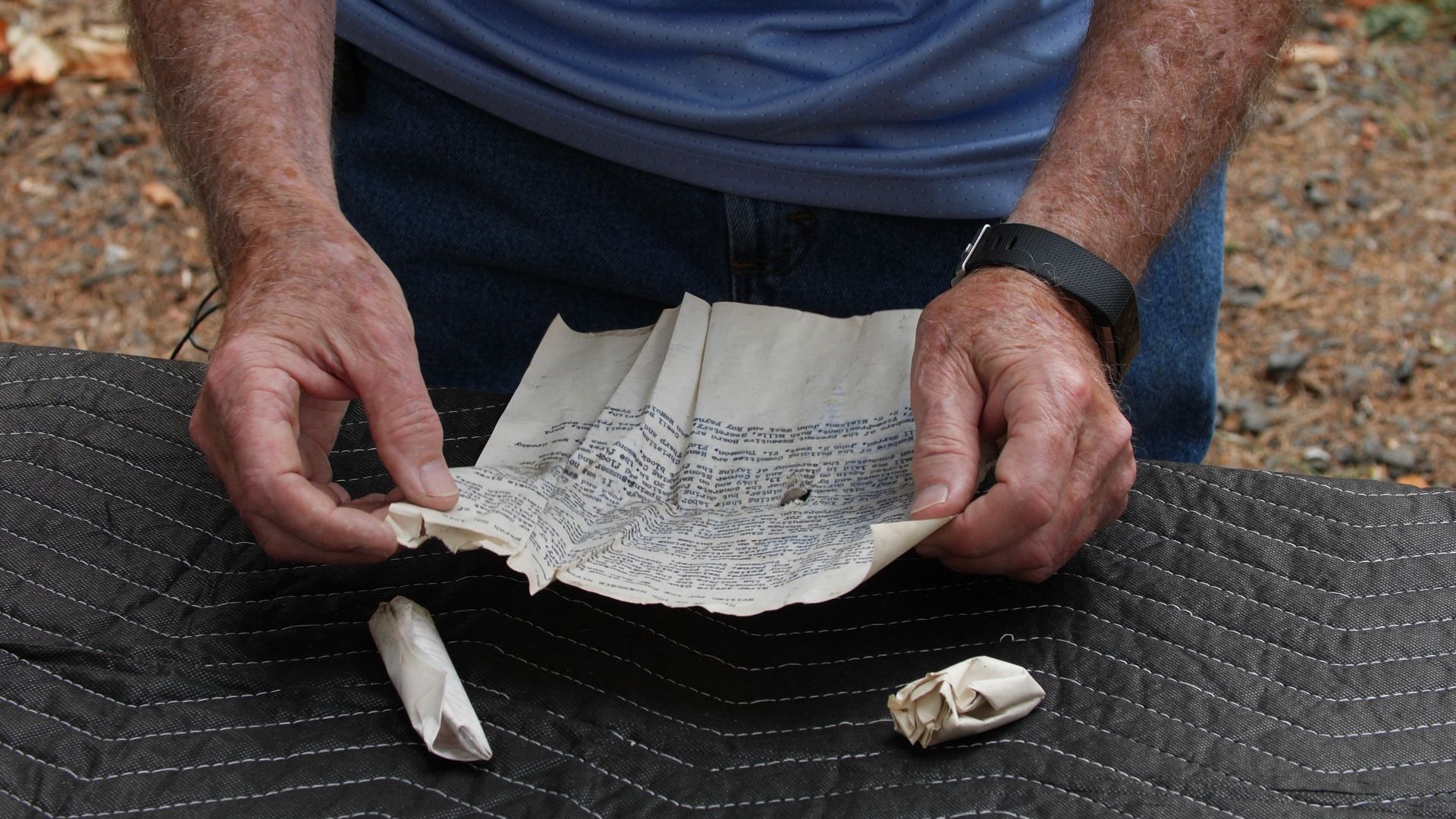 Oregon Department of Transportation, Wikimedia Commons
Oregon Department of Transportation, Wikimedia Commons
The World's Shortest War—Real
Apparently, the Anglo-Zanzibar conflict holds the record for brevity. It started and ended on August 27, 1896, lasting a mere 38 minutes from the first shot to surrender. The conflict erupted when Sultan Khalid bin Barghash seized power in Zanzibar against British wishes.
 Richard Mohun, Wikimedia Commons
Richard Mohun, Wikimedia Commons
The World's Shortest War (Cont.)
When Khalid refused to step down and barricaded himself in the palace with 2,800 men, British warships anchored in the harbor delivered an ultimatum. At precisely 9:02 AM, the deadline expired without compliance, and British ships opened fire on the palace.
 Fred T. Jane, Wikimedia Commons
Fred T. Jane, Wikimedia Commons
Dancing Through The Depression—Real
During America's Great Depression, a distinct entertainment phenomenon emerged that combined desperation and endurance: the dance marathon. These grueling competitions, immortalized in films like They Shoot Horses, Don't They?, required couples to remain in continuous motion for weeks or even months.
 Michael Ochs Archives, Getty Images
Michael Ochs Archives, Getty Images
Dancing Through The Depression (Cont.)
The economics behind these events revealed their exploitative nature. Promoters charged spectators admission to watch exhausted contestants shuffle across the floor. At the same time, participants endured physical and psychological torture for the promise of prize money and, more immediately, guaranteed meals and shelter.
 National Photo Company, Wikimedia Commons
National Photo Company, Wikimedia Commons
Ferrets As Roman Pest Control—Likely Real
While modern households keep cats to manage rodent populations, ancient Romans turned to a different furry predator. Ferrets were the pest control specialists of choice throughout the Roman Empire, specifically bred and trained to hunt rats and mice in homes and granaries.
 Alfredo Gutiérrez, Wikimedia Commons
Alfredo Gutiérrez, Wikimedia Commons
Ferrets As Roman Pest Control (Cont.)
The practice began with ships using ferrets to protect valuable cargo from rodent damage during long voyages. As their effectiveness became apparent, wealthy Romans kept ferrets as essential household assets alongside dogs used for security. Ferret remains have been found buried in Roman villas.
 USFWS Mountain Prairie, Wikimedia Commons
USFWS Mountain Prairie, Wikimedia Commons
Napoleon Vs Rabbits—Likely Real
One of this man’s most embarrassing defeats came at the paws of fluffy woodland creatures. In July 1807, after signing the Treaties of Tilsit, Napoleon arranged a rabbit hunt to celebrate his diplomatic triumph. His chief of staff collected thousands of rabbits for the occasion.
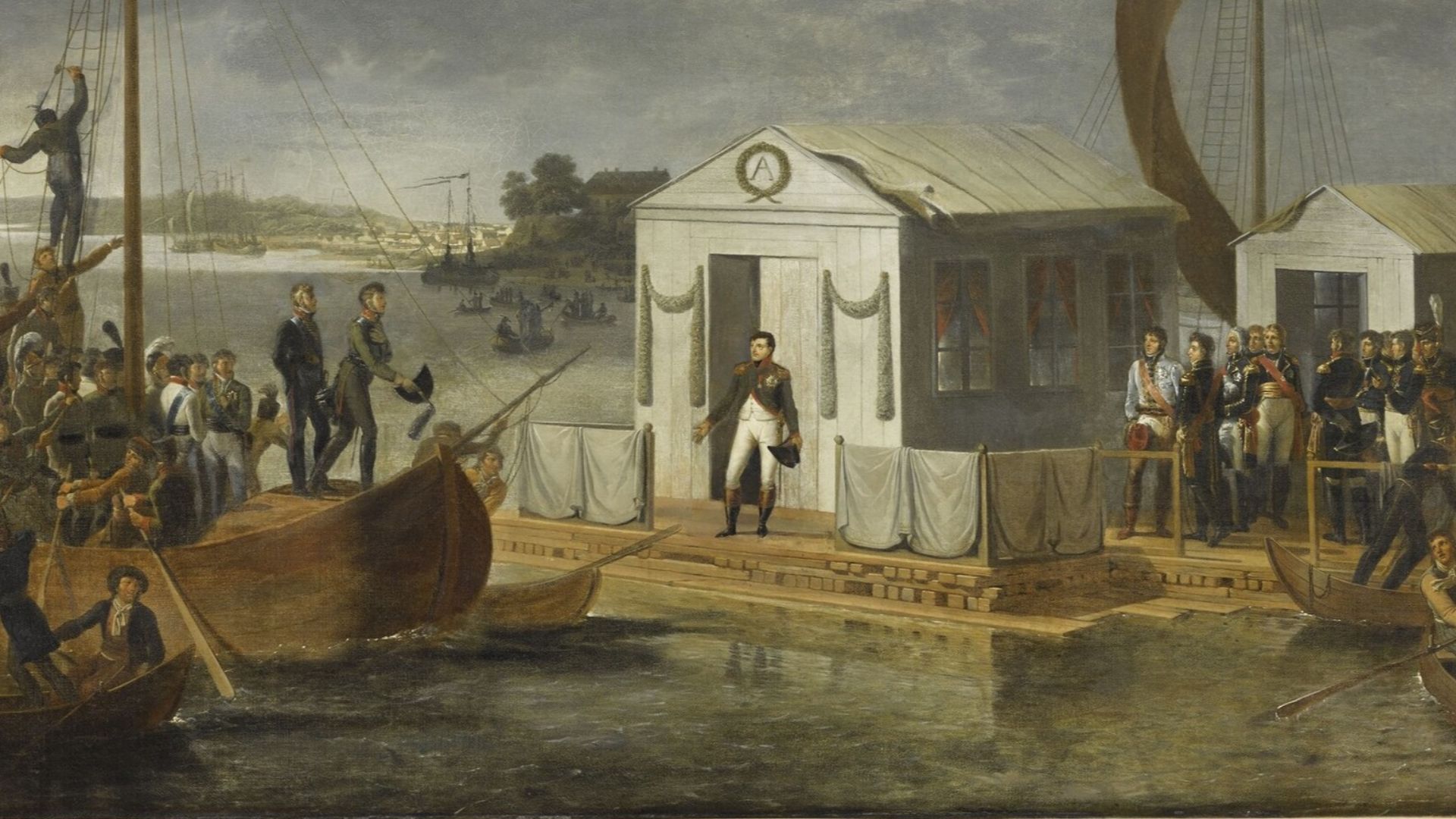 Adolphe Roehn, Wikimedia Commons
Adolphe Roehn, Wikimedia Commons
Napoleon Vs Rabbits (Cont.)
When the cages opened, instead of scattering in fear, the rabbits charged directly at Napoleon and his hunting party. As Napoleon swatted at the swarming bunnies with his riding crop, they continued their relentless assault. This man was forced into a humiliating retreat to his carriage.
 Ida von Schulzenheim, Wikimedia Commons
Ida von Schulzenheim, Wikimedia Commons
Cursed Hope Diamond—Likely Legend
Among the Smithsonian Institution's treasures sits a 45.52-carat deep blue diamond with a reputation for bringing misfortune to its owners. Originally purchased in India by a French merchant in the 1660s, the gem supposedly carries a curse placed by a Hindu temple priest.
 Unknown authorUnknown author, Wikimedia Commons
Unknown authorUnknown author, Wikimedia Commons
Cursed Hope Diamond (Cont.)
This occurred after the stone was stolen from a statue of the goddess Sita. Many stories link tragic fates, such as the beheadings of Louis XVI and Marie Antoinette, suicides, and financial ruin, to those who possessed it. However, most historians agree these tales are exaggerated or unsubstantiated.
 Unknown authorUnknown author, Wikimedia Commons
Unknown authorUnknown author, Wikimedia Commons
Pineapples As Status Symbols—Real
In 18th-century England, pineapples were such rare and exotic treasures that they became the ultimate symbol of wealth and sophistication. The tropical fruit, which required specialized heated greenhouses called "pineries" to grow in Britain's chilly climate, could cost the equivalent of $8,000 in today's money.
Pineapples As Status Symbols (Cont.)
The pineapple's exclusivity crafted a peculiar social custom among the aristocracy. Those who couldn't afford to purchase these luxury fruits outright would actually rent pineapples for dinner parties, displaying them as centerpieces without ever eating them. Some hosts used the same pineapple at multiple gatherings.




















